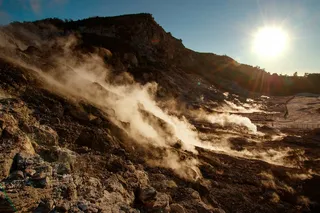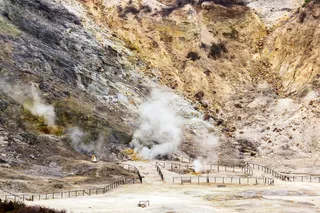The ash plume from Kambalny on March 25, 2017. The inset image shows the region the day before, with no plume from the volcano and no evidence of ash.NASA, Annotated by Erik KlemettiThis weekend saw a new eruption from Kambalny in southern Kamchatka. Now, the Kamchatka Peninsula is a very volcanically active area, with multiple eruptions going on simultaneously much of the time. There are certain volcanoes that are in almost-constant unrest, like Shiveluch, Kliuchevskoi, and Karymsky. However, Kambalny is not one of the usual suspects for activity. This changed when a dark grey ash plume was spotted by Earth-observing satellites on March 25. The plume (see above) stretched hundreds of kilometers to the south over the Pacific Ocean and may have reached as high as 8 kilometers (26,000 feet) above sea level. Be sure to check out the NASA Earth Observatory image of the eruption that clearly shows the ...
A Russian Volcano Just Erupted for the First Time in Centuries
The Kambalny volcano eruption on March 25, 2017, surprised scientists with a significant ash plume over Kamchatka Peninsula.
More on Discover
Stay Curious
SubscribeTo The Magazine
Save up to 40% off the cover price when you subscribe to Discover magazine.
Subscribe













